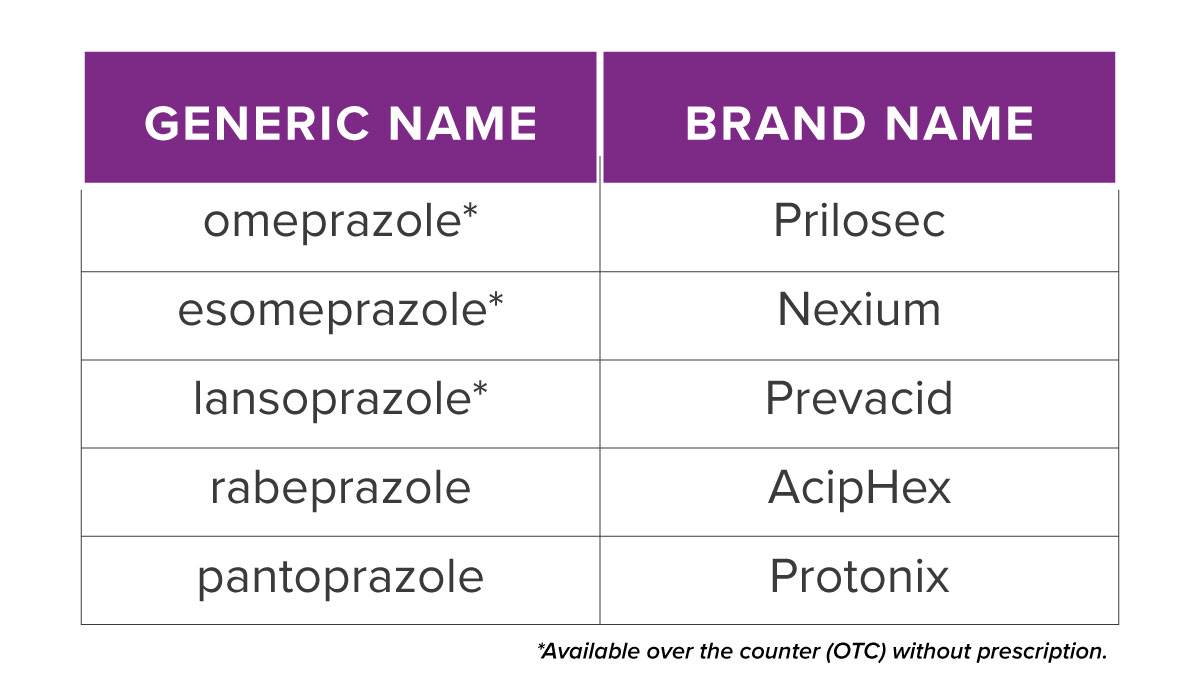PPIs can be an incredible way to tackle stomach acid and help you feel better. However, knowing how to take them can save you from adverse reactions.
Once in a while, each of us has experienced some acid or gastric discomfort. It can be of great discomfort to feel heartburn, inflammation, or irritation in your esophagus while being out at a restaurant, enjoying life, or even in the comfort of your home. That’s where PPIs come in.
What are PPIs?
Proton pump inhibitors, or PPIs, are medications you can take to reduce stomach acid created by glands in your stomach lining. They can help you with acid reflux, GERD, gastric ulcers, and damage caused by acid. PPIs are used for:
- Heartburn (if occurring ≥2 days/week; OTC)
- Gastroesophageal reflux disease (GERD) (Rx)
- Zollinger-Ellison syndrome (Rx)
- Helicobacter pylori eradication (Rx)
- Peptic ulcer disease (Rx)
Some of the most common medicines to use are:

*Available over the counter (OTC) without prescription.
How to use them
These types of medicines can be taken by mouth. Take tablets with or without food unless your doctor tells you to take them another way. Make sure not to break, crush, or chew the medicine.
On the other hand, granules should be taken 30 minutes before a meal. Mix granules with 1 applesauce teaspoon or 1 teaspoon (5 mL) of apple juice. Do not mix with other foods or liquids. Take the dose within 10 minutes of mixing. Please, do not chew or crush the granules.
Continue treatment for 4 to 8 weeks, depending on a physician’s indication, resolution of symptoms, or otherwise indicated. Take the lowest effective dose (1 PP1 daily) for the shortest time to avoid side effects.
Side effects and interactions
According to Harvard, initially, there was some worry that PPIs might increase the risk of developing stomach cancer. Those concerns were unfounded, but others have taken their place, partly because people often take PPIs daily for years, so the total exposure to the drug is quite significant. Some side effects are GI distress (constipation, diarrhea, stomach pain, upset stomach, throwing up, gas), headache, joint pain, and signs of a common cold. Additionally, long-term possible side effects can include:
- Enteric infections: increased gastric pH secondary to PPI administration leads to changes in the intestinal microbial environment which may allow for intestinal germination and growth or colonization by other bacteria.
- Fractures: a decreased absorption of calcium, magnesium, and vitamin B12.
- Fundic gland polyps: increase in the prevalence of parietal cell protrusions, which cause outflow blockage of the isthmus and subsequent formation of gland cysts.
- Interstitial nephritis: may be immunologic or idiosyncratic, with a direct toxic effect of omeprazole on tubular cells.
More information
With so much information, it can be hard to know exactly which properties and dosages can be effective for you.
- PPIs should be dosed once a day unless otherwise indicated by guidelines for some diseases such as GERD, Zollinger-Ellison syndrome, H. pylori eradication, and peptic ulcer disease, among others.
- It can be dosed twice daily, depending on the indication.
- The duration of therapy should be the shortest effective to avoid side effects.
- Take the PPI 30-60 mins before breakfast. In the case of twice daily dosing, take them 30-60 mins before the day’s last meal.
- PPIs can be interchangeable based on equivalencies within them.
- Omeprazole has been demonstrated to control nocturnal gastric pH more effectively in the first 4 hrs of sleep than other PPIs administered at bedtime.
It’s also important to let your physician know of any medications you use and the frequency in which you take them, including OTC PPIs.
If you are experiencing severe side effects, don’t hesitate to contact your doctor or the FDA online or by phone at (1-800-332-1088).
__
*This blog post was written by Virnalís Santiago Sanabria, B.S., Pharm. D Candidate at Abarca Health.